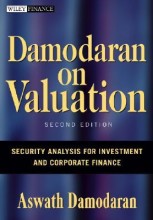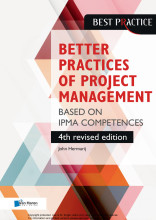Summary: Damodaran On Valuation : Security Analysis For Investment And Corporate Finance | 9780471751212 | Aswath Damodaran
- This + 400k other summaries
- A unique study and practice tool
- Never study anything twice again
- Get the grades you hope for
- 100% sure, 100% understanding
Read the summary and the most important questions on Damodaran on valuation : security analysis for investment and corporate finance | 9780471751212 | Aswath Damodaran.
-
1 Introduction to Valuation
-
What is the premise of this book?
To make reasonable estimates of value for most assets, both real and financial, while the core principles are the same.
-
1.1 A Philosophical Basis for Valuation
This is a preview. There are 3 more flashcards available for chapter 1.1
Show more cards here -
Why is it absurd to argue that value is in the eye of the beholder?
Perceptions may be all that matter when value a painting or a sculpture, but we buy financial asstes for the cash flows we expect to recieve from them.
-
What do we do before we start the valuation?
We first consider the sources of bias in the valuation and then move on evaluate how bias manifests itself in the valuation.
-
What are manifestations of bias?
- First bias can be found in the inputs we use in the valuation. The inputs can be optimistic or pessimistic.
- Postvaluation tinkering. Revisiting the assumption for the valuation after the market has determined a higher / lower value.
- Attribute the difference in value to a qualitative factor (e.g. synergy or strategic considerations).
-
What is the problem with investing with the expectation that when the time comes there will be a bigger fool around whom to sell the asset to?
You might end up being the biggest fool of them all.
-
What are ways to mitigate bias?
- Reduce institutional pressures. Equity research analysts should be protected from the institutions they rate / valuate
- Delink valuations from reward / punishment (e.g. the investment banker that has to value the company which is a target for take over)
- No pre-commitments - make sure that no statements or otherwise are made to the market prior to clompeting the valuations. Analysts will else be baised in their valuation.
- Self-awareness
- Honest reporting - report your biases together with your valuation.
-
1.2 Inside The Valuation Process
This is a preview. There are 22 more flashcards available for chapter 1.2
Show more cards here -
What are the two extreme views of valuation?
1. Valuation is a hard science, with little room for analyst views or human error. 2. Valuation is an art, where savvy analysts can manipulate the numbers and get any result they want.
-
What are three reasons not to make the valuation model to complex?
- Information overload
- Black box syndrome
- Big versus small assumptions
-
Where does bias start in valuation?
With the companies we choose to value.
-
What is the principle of Parsimony?
Try and use the simplest model possible to value an asset. If we can get away with 3 inputs instead of 5, we should go with 3!
- Higher grades + faster learning
- Never study anything twice
- 100% sure, 100% understanding































